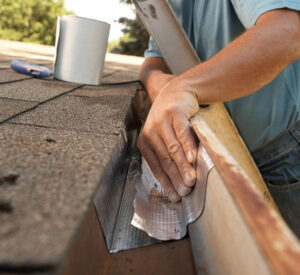Gutter repair might seem like a minor home improvement project, but it can save you from costly gutter problems down the line. Any cracks or fissures in a gutter should be patched and sealed as soon as you can.
A ladder is necessary for accessing any gutter areas that require repairs. You will also need gutter patching material, cleaning tools, and adhesives. For more information, visit https://guttercleaningcharlestonsc.com/.
Your gutters protect your home from water damage, but they must be in good shape. Sagging or drooping gutters can affect the integrity of your roof, causing leaks and other problems. Gutters can also sag because they are clogged with debris and water, making them too heavy to hold up.
Keeping your gutters free of clogs, sagging, and other damage is easy with a bit of regular maintenance. Clean your gutters at least two times a year, and more often after major storms. You can also prevent sagging gutters by making sure the hangers and fasteners are tight and secure.
A common cause of sagging gutters is when the fasteners break loose or come off. Fortunately, this is an easy problem to fix if you are comfortable working on a ladder. Start by using a power drill to unscrew the old screw or hanger that is holding the gutter in place. Once the fastener is removed, use a ladder to reach the area of the gutter that is sagging and add a new hanger or screw in the same location. Make sure the new hanger or screw is long enough to attach to the fascia board and rafter behind your gutter.
Another reason for sagging gutters is when the gutter system is not installed with a steep enough pitch. This is another issue that can be fixed by hiring a professional gutter installer to check your home’s roofing and gutter system.
Gutters are designed to funnel water from the roof and downspouts into specified channels in your yard, away from your house. This keeps your foundation and siding protected, and it helps minimize water leaks into your basement or home’s walls. Sagging or leaking gutters can lead to costly damage, so be sure to check your gutters regularly and take prompt action if you see any signs of sagging or drooping. The experts at Avery Roof Services can repair or replace your gutters and downspouts to keep them functioning properly. Call us today to schedule an estimate for your Sarasota or Manatee area home!
Loose Gutters
Gutters are designed to funnel water runoff from your roof toward downspouts and away from your home, preventing soil erosion and basement flooding among other costly problems. Gutters that are loose or falling off will not be able to function properly, so it’s important to check for signs of gutter issues and fix them as soon as possible.
A clear sign of loose gutters is seeing sections that are bowing down. This can happen for a few reasons, including overflowing debris and sagging from the weight of water buildup.
You can also see this issue if the gutter is not pitched or sloped correctly. Ideally, your gutters should be pitched or sloped 1/16 inch per foot to help drainage and prevent standing water. Gutter installation contractors will know how to set your gutters up for proper drainage and avoid sagging.
Another reason your gutters may be sagging is if the spikes or screws that hold them in place have come loose or stripped. When this happens, the gutter is no longer secured and can fall off during high winds or rainstorms.
A professional can replace these spikes with hidden hangers to solve this problem. These will be more secure and won’t leave holes in your gutters like spikes can.
To fix this problem, you’ll need to get up on a ladder and take a look at the gutters to see what needs to be done. If there are a lot of spikes that have come loose, you can try to hammer them back in. However, if the holes have become too worn to screw back in, you’ll need to use method 2 or 3.
If your gutters are loose in one area but still holding up, that means there is not a lot of weight on them. This is a great sign that you can save money by just tightening the loose section of gutters. However, you should replace the loose hangers with new ones anyway, to make sure that they’re safe from future damage. You can buy new hangers at your local hardware store or a gutter replacement company.
Gutters Hanging Low
If you see a section of gutter hanging low, it’s important to have it repaired right away. A loose section of gutter can cause rainwater to leak into the home, creating moisture damage and potentially mold and mildew problems. Gutter sections that are hanging loose can also sag, requiring you to re-install them.
Usually, a sagging gutter section can be fixed by reinstalling the hangers and screws. This is a simple job that can be done with a ladder and some tools. Just remove the existing hangers and screws fastened to the gutter section, then replace them using a screwdriver or cordless drill in new locations. For best results, choose gutter hangers with at least 2 inches of threading on the end to provide greater penetration into the fascia and a secure hold.
Another common problem that can be fixed easily is missing gutter spikes. These are small pieces of metal that go through the bottom of the gutter on both sides and secure it to the fascia with a ferrule. They are typically installed every 18-24 inches. If you notice a gap where one of the spikes is missing, this can indicate that the gutter isn’t being secured properly and will start to come looser over time.
Gutters that are clogged can often pull loose from the fascia, and this can be caused by water standing in one section of the gutter due to a clog or an incorrect pitch. Generally, water stands in the gutter a few feet from the end cap of the downspout because it isn’t pitched correctly to direct water to the downspout outlet.
Fixing holes in the gutter is relatively easy and can be done with a bit of patience and a hammer. Once you’re up on the ladder, place a hammer against the fascia just to the left or right of where you plan to tap. Keeping the gutter steady with one hand, firmly hold the hammer against the fascia and tap it firmly. Keep tapping until you feel the hole go through the aluminum and into the wood. Repeat for each missing spike. You can also use a caulk gun to apply a thin line of caulk around the gap where the gutter meets the fascia to help seal it better.
Gutters with Nails or Screws
Gutter spikes (also known as nail spikes) are an older style of gutter installation that use nails to secure the gutter to the fascia board and rafter. The problem is that over time this method of fastening becomes a weak point in your gutter system. As water, debris and snow cause your gutters to expand and contract the nails become loose and eventually pull out. You can re-secure the nails by hammering them back into place; however, this is a temporary fix that will require you to continue to do this on an ongoing basis.
Gutter screws, or gutter hangers are a more permanent solution that offer much better performance than nails. They lock into the front lip of your gutter and clip into the back. The gripping ring shank on the gutter screw holds tighter than a nail, making it less susceptible to expansion and contraction and reducing the likelihood of your gutters pulling away from the fascia board. Additionally, gutter hangers are more durable than nails and will last longer.
When installing gutter screws, it is important to drill holes that are slightly larger than the existing spike hole to ensure that your gutters are secured correctly. You may want to use a metal drill or an oscillating tool with a blade that is designed for cutting sheet metal to make sure that your holes are precise and will be able to hold the new gutter screws. It is also a good idea to wear a face mask and rubber gloves when drilling or hammering in order to protect yourself from dust, dirt, mold and other contaminants that can be released into the air as you work.
Once you have the screws installed, it is a simple process to attach your gutter downspouts and finishers. Make sure that you use a seam sealer to seal all of the connections in your gutters, including end caps, splices and drop outlets. Be sure to choose a gutter sealer that is formulated for metal and can handle expansion and contraction.
